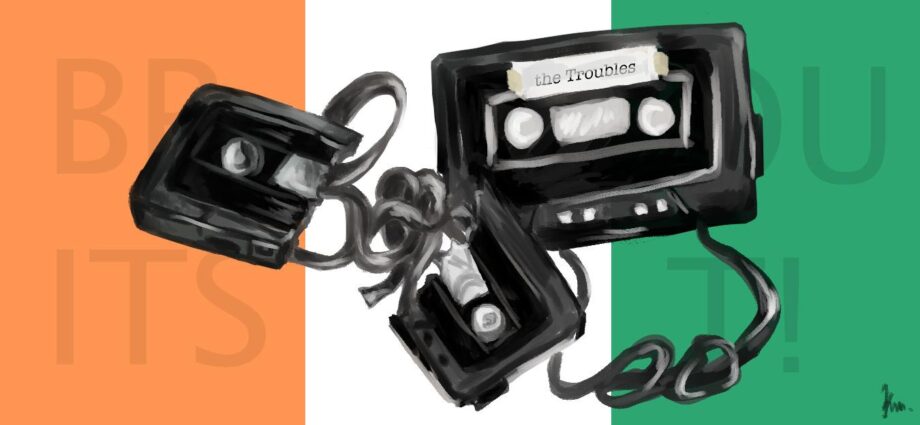By Iris Raith
How do you document history pertaining to terrorist activities without offering them a safe haven from possible legal proceedings? This is one of the questions that arose from the unraveling of the Belfast Project in 2011. This academic project was initiated in 2001, a few years after the negotiated peace deal in Northern Ireland, known as the Good Friday Agreement (1998). A group of academics wanted to record the memories of the paramilitaries who fought relentlessly during The Troubles, either to unite with Ireland (‘Republicans’) or to remain part of the United Kingdom (‘Loyalists’). The idea was to collect the stories of paramilitaries to establish an oral history of the struggles between the two factions of the 30-year-long conflict.
Throughout the early 2000s, many famous IRA (Provisional Irish Republican Army) members agreed to tell their story to the Belfast Project, often going into detail about their implications in well-known terrorist attacks such as the Bloody Friday bombings in Belfast in 1972, with nine fatalities and 130 injured civilians. The interviewees felt they could open up to the initiators of the project for mainly two reasons: First, the interviewers themselves were, in fact, intimately familiar with the conflict. For instance, Anthony McIntyre, the interviewer of the IRA members, was a former IRA volunteer who had spent 18 years in prison for murder. Thus, he had the advantage of being able to establish an important bond of trust with his interviewees due to their shared fighting past and ideology. Second, the paramilitaries were assured before their interviews that the recordings would be kept sealed and secret in the Boston College Library until their death.
The latter became the focal point of the ultimate end of the Belfast Project in 2011. That year the U.S. Department of Justice (DOJ) acted as a legal assistant to a request from the U.K., asking for some of the secret tapes to use as evidence in an unsolved murder. The case was that of Jean McConville, a widowed mother of 10 who had been kidnapped by the IRA and disappeared in 1972 because she allegedly acted as an informant for the British. She was one of the many ‘Disappeared’ by the IRA, and her case was never solved. However, the IRA first admitted to her murder in 1999, and her body was finally found in 2003. The Police of Northern Ireland (PSNI) had hoped to solve her killing with the help of the secret tapes. Thus, subpoenas were delivered to the College by the DOJ.
The initiators of the Belfast Project fought tooth and nail against the release of the tapes to the PSNI, their main argument being that they had promised confidentiality to the interviewees. The members of the paramilitary organizations had spilled the tea on their terrorist activities, often confessing to serious crimes. They did so with the interviewers’ assurance that the tapes would remain secret until their death and be shielded from legal prosecution. However, these guarantees turned out to be unfounded. The contracts set up between the organizers of the project and the paramilitaries were never revised by the College’s lawyers. They also included ambiguous language when it came to the limitations concerning the protection of the project’s content. Consequently, the U.S. courts granted the subpoena, and the requested tapes had to be sent to Northern Ireland. Ultimately, no one was prosecuted in the McConville murder, and the tapes were assessed as unreliable and thus were not used in court.
However, the damage to the project was done, and the initiators spoke of a missed opportunity to produce a vast collection of oral history that could have served as a unique trove of multi-perspective accounts from The Troubles. Moreover, the historiographical method of oral history also took a hit due to this situation. One of the main arguments of the U.S. courts for requesting the tapes was that the Belfast Project was not a work of journalism. As a consequence, it did not have the possibility of protecting its confidential sources, an essential feature of investigative journalism.
The various problematics of the Belfast Project show us that the method of oral history needs to be revised by academics in collaboration with actors from other fields. For recording history and dealing with the past, it is essential to establish documentation on conflicts from various involved actors. The aims of the Belfast Project were honorable and a unique opportunity of attempting to provide a holistic history of The Troubles. Terrorists, just like any other actor in a conflict, should be given a voice for their perspectives to be heard. However, their admittance to crimes should not be kept secret, prohibiting the solving of decade-long cases and the provision of final catharsis for the victim’s loved ones. If the release of the tapes had been dealt with differently, they could have been used in a reconciliation framework between the survivors or relatives of the victims and (former) paramilitary members. This would have allowed all parties to adequately and collectively work through their traumas.
However, the neglect of proper oral history training, the inadequate establishment of clear rules of the Belfast Project organizers and the ultimate politicization of the tapes by the British government and the local Northern Irish politicians hindered the purposeful dealing with the recordings. The lack of a comprehensive and robust framework before the recordings was a significant failure on the initiators’ part. The political war against the Sinn Féin party and its then-leader Gerry Adams – regularly mentioned as the ultimate IRA commander in various tapes but always denied by himself – blinded the local politicians to the ultimate goal that should have been the consolidation of the peace agreement. The persisting neglect of the latter can be witnessed in a still ongoing segregation of societies, and the currently revived clashes confirm that peace in Northern Ireland remains an extremely fragile situation.
Edited by Indra Schieferbein, artwork by Mira Kurtovic

